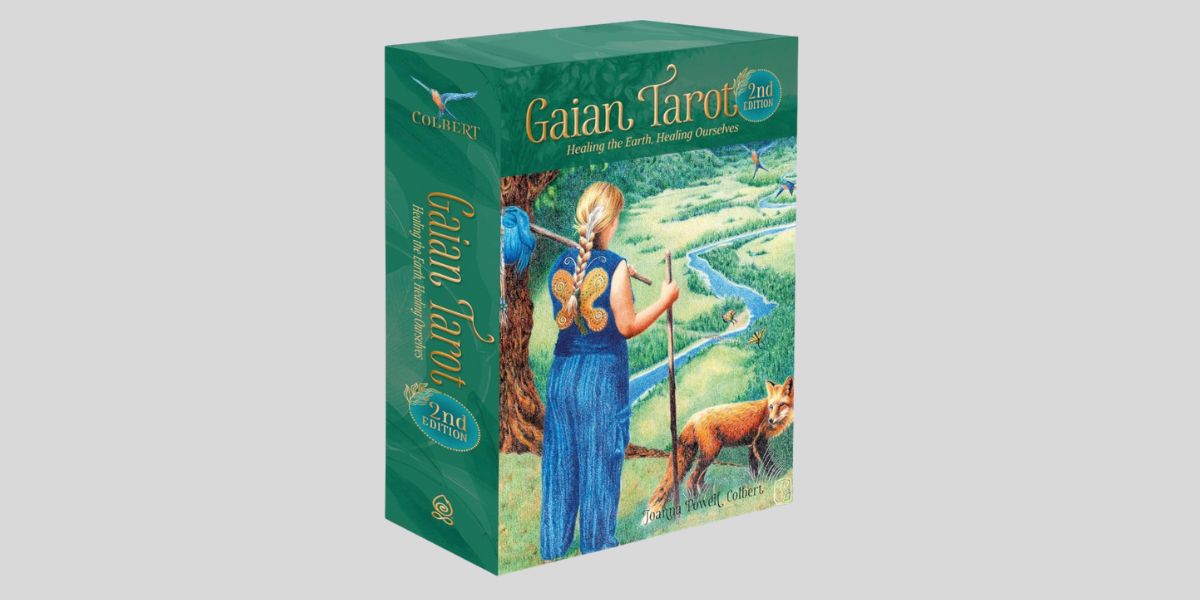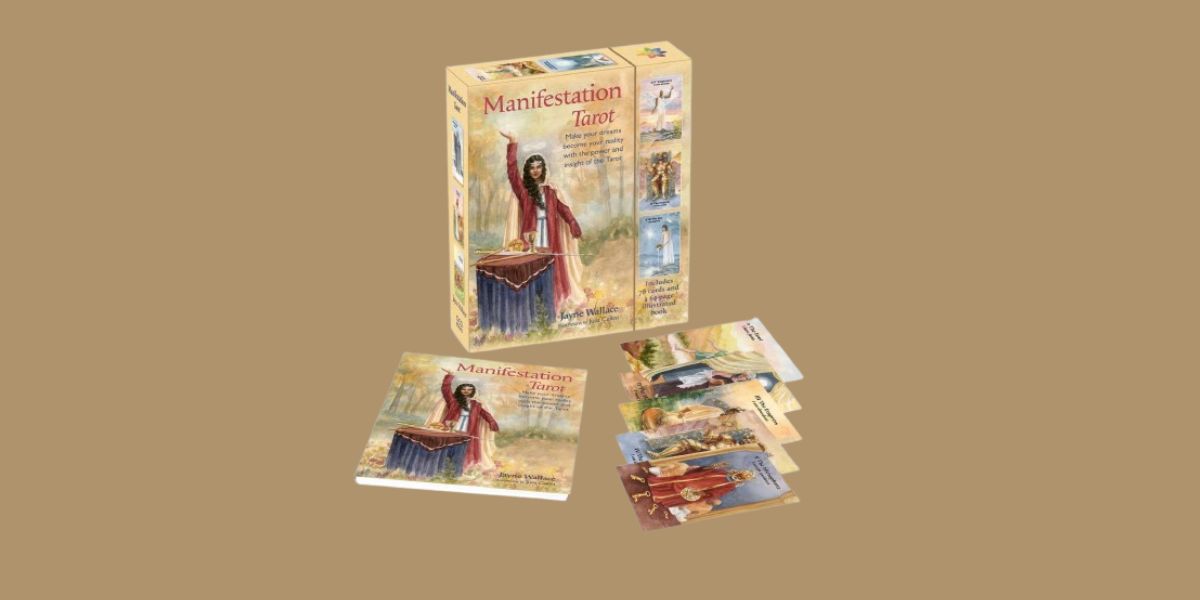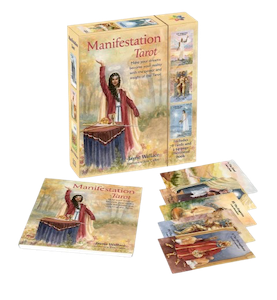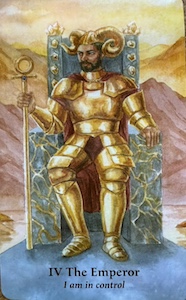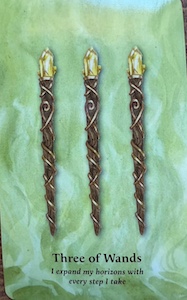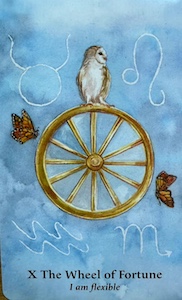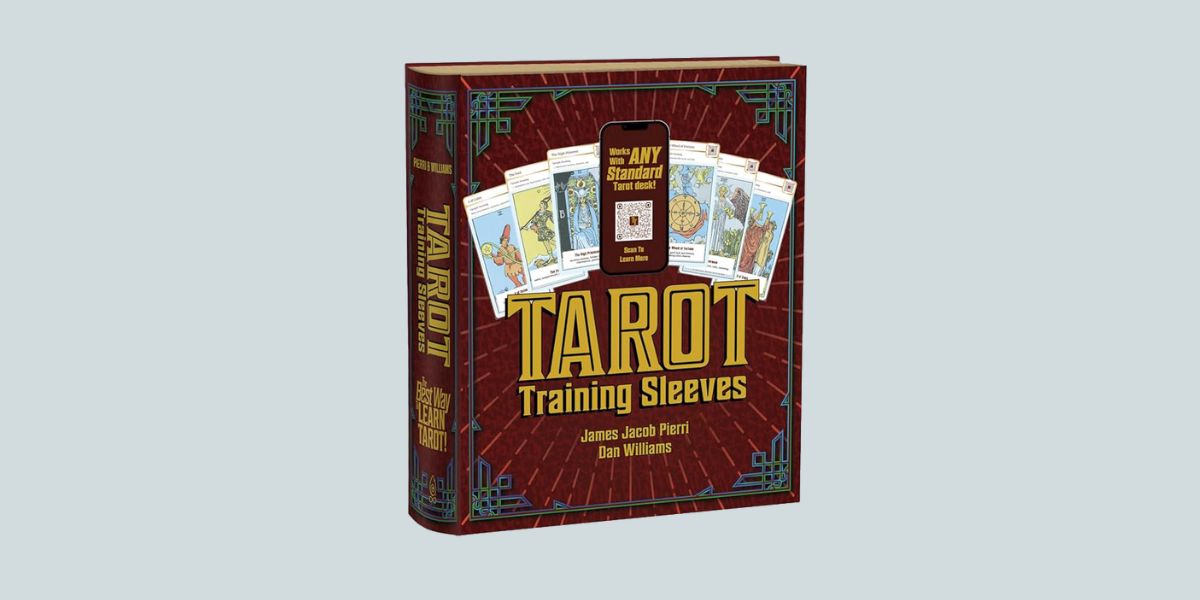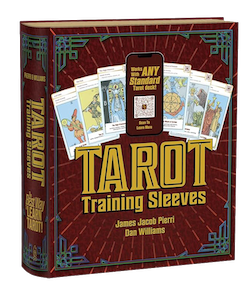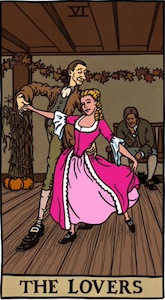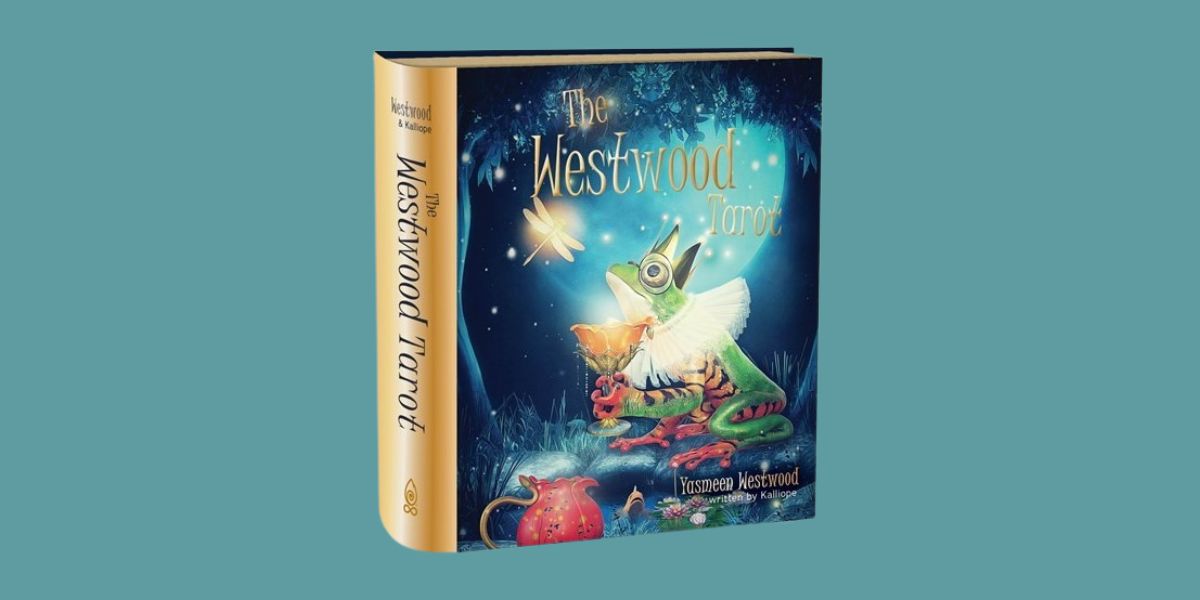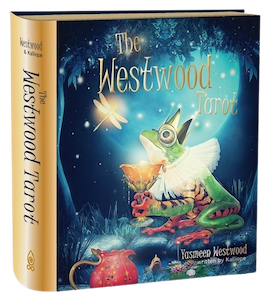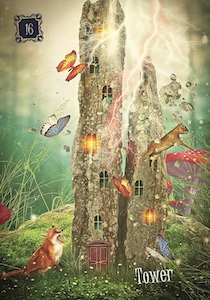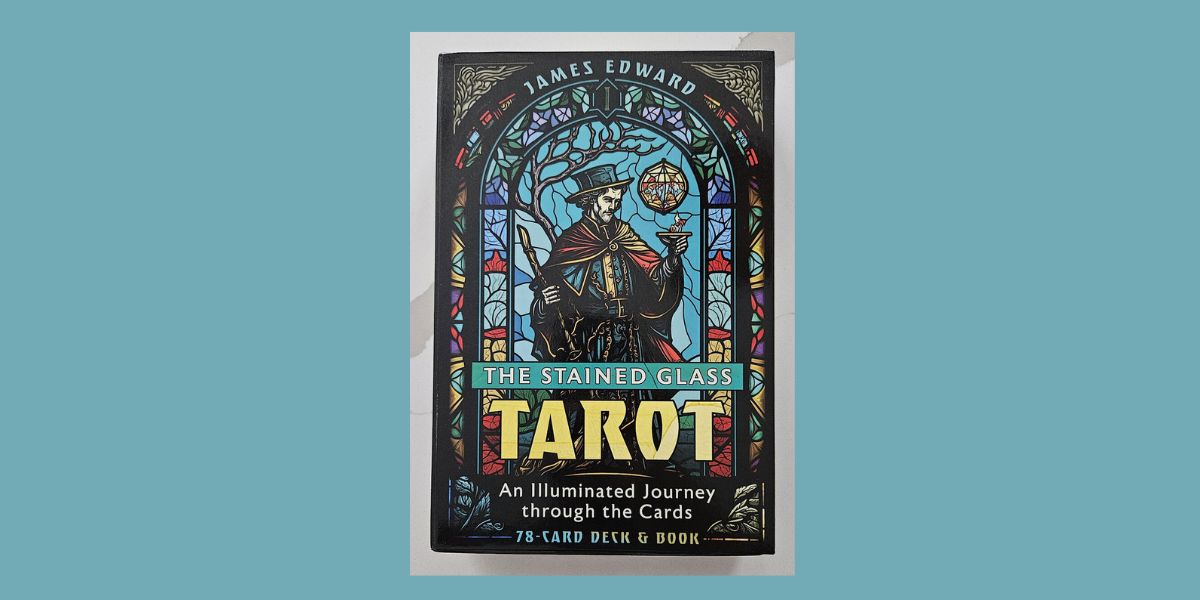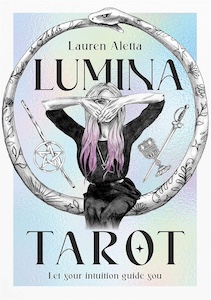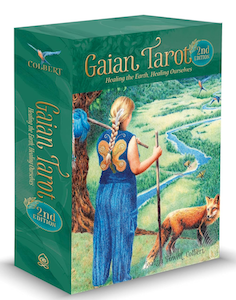
Gaian Tarot: Healing the Earth, Healing Ourselves, 2nd Edition, Joanna Powell Colbert
REDfeather, 0764368753, 192 pages, 78 cards, April 2025
Gaian Tarot: Healing the Earth, Healing Ourselves, 2nd Edition by Joanna Powell Colbert is a beautiful and luminous deck that invites its users to create a deeper connection with the natural world, their own inner landscapes, and humanity. Rooted in the artist’s profound reverence for the earth and her community, this deck is a reimagining of the tarot tradition that speaks to modern sensibilities while honoring the timeless archetypes of the past.
Joanna Powell Colbert is an artist, teacher and retreat host who has been practicing with tarot for more than 40 years. She also created the Pentimento Tarot and co-created the Herbcrafter’s Tarot. Following a path that honors “the four directions as well as the eight-fold sacred wheel of life, death and rebirth”1, Colbert teaches about the natural world. She hosts retreats and teaches workshops on earth-centered spirituality and the tarot as a tool for inspiration and personal growth. She lives near the Salish Sea in Bellingham, Washington. Learn more about Colbert on her website.
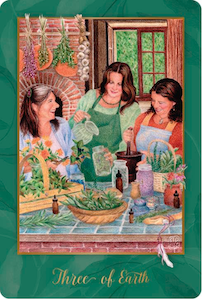
In this second edition of the deck, which was originally published in 2010, Colbert changes the main color scheme from the blue of the ocean to the green of the land. The artwork for each card remains the same. The new edition features new borders for the cards, new art for the card backs, and a new box design. The card size has been reduced slightly, and the guidebook has been revised, as well. Colbert also added gold edges to the cards, as well as gold accents to the borders and card titles.
The artwork of Gaian Tarot is its most striking feature. Colbert’s paintings are warm and vibrant with rich colors and intricate details. Colbert shares that each piece of art was created from her own sketches of the natural habitat around her and you can feel the authenticity and vitality. Each card feels like a standalone piece of art, inviting deep contemplation and connection. The images of people celebrate diversity in gender, age, ethnicity, and body types, reflecting inclusivity and balance. You feel a sense of community, both with people and the animal kingdom. The back of the cards features a beautiful painting of the world, accented by a butterfly and a wreath of what Colbert calls “blessing herbs.”2
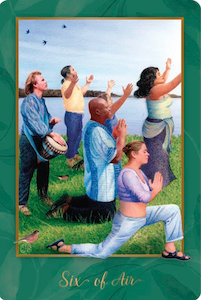
This deck remains faithful to the traditional structure of a 78-card deck, with a Major Arcana of 22 cards and a Minor Arcana of four suits. However, Colbert has reinterpreted many of the archetypes and titles to align with her Earth-honoring philosophy. For example, traditional titles like Emperor and Devil are replaced with Builder and Bindweed, offering fresh perspectives that align more with themes of balance, growth, and self-awareness.
The suits of the Minor Arcana—Earth, Water, Air, and Fire—are tied to the natural elements. Each card carries symbols of the natural world, from animals and plants to landscapes and weather patterns. This connection to nature enriches its symbolism, allowing users to draw inspiration from the rhythms and wisdom of the Earth. Colbert also changes the court cards and renames them to “correspond to the stages of life.”3 She presents Children, Explorers, Guardians and Elders, mixing up the genders, as well. She goes on to add:
“Today I honor that sex and gender are not binary, and I invite the reader to interpret the people in the cards as they wish, including as transgender or non-binary.”4
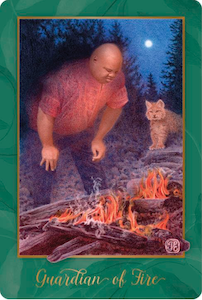
The guidebook is structured into two sections, presenting guidance for the Major Arcana and the Minor Arcana. For the Major Arcana, Colbert presents two to three pages of guidance, including general meaning, shadow aspects, themes, symbols and journal questions. She ends with a reminder, which serves as a one sentence recap of the card’s wisdom.
In the guidance for the Minor Arcana, Colbert sets the cards up in groups of four, based on the number or name of the card. The aces lead the section, followed by all the twos and so on. This structure makes it easy to find the pip card you seek. Colbert includes one full page of guidance for each card, including the remembrance line that sums up the wisdom.
I really enjoyed the section on symbols for each Major Arcana card, where Colbert lists most of the elements in the artwork and gives a brief explanation of the meaning. For example, on Temperance, she details the meanings behind angel, rainbow, sunset/sunrise, shell, burning herbs, streaming pool and iris. This additional information adds another layer of understanding and nuance to the guidance.
The journal questions are also helpful and thought-provoking. I used the journal questions with my daily card pull for three days and was amazed at the new information and wisdom I received from this form of self-reflection.
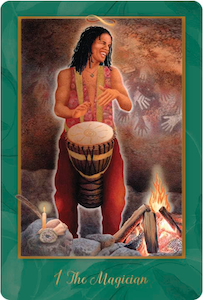
To further test drive this deck, I utilized one of the spreads Colbert shares in the guidebook. “Theme, Task, Prayer”, which is attributed to Morgan Glover, is a brilliant spread that supports a glimpse into the next week or month. (Colbert features almost 30 pages of spreads with the deck.)
I drew three cards to learn more about my opportunities or challenges, the best action to take and the assistance I can expect from my angels or ancestors.
- Theme: Eight of Earth – I have an opportunity to pass on my knowledge and skills.
- Task: Elder of Fire – Act now to share my wisdom and magic.
- Prayer: Ace of Earth – Connect to the path between the seen and unseen worlds and ask for help from angels and ancestors. Support is always available.
From this reading, I came to know that I am right on track! Put one foot in front of the other and keep going with my sacred work with women.
The cards are printed on heavy card stock that will hold up well to continued use. The guidebook and cards are housed in a sturdy box with a magnetic closure. The box showcases more of Colbert’s stunning artwork and raised type in brilliant gold. The back of the box features information about the deck and sample cards in a design that is overlaid with varnish and more raised type.
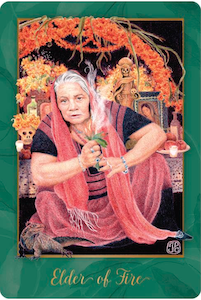
Whether you’re a seasoned tarot reader or a curious beginner, this deck offers an inviting entry point. The guidebook is a valuable companion. It shares the symbolism of each card with clarity and depth, providing both traditional and intuitive interpretations. Colbert’s intention is clear: to create a deck that nurtures, heals, and empowers its users to engage with the world in a compassionate and mindful way. The deck creator says:
“When used for divination the tarot can be viewed as a spiritual weathervane. It can tell you which way the wind is blowing in your life at a given moment. But only you can set your sail and choose your course. I hope that the Gaian Tarot helps you connect with the divine, in whatever way you can see that to be.”5
I really enjoy working with Gaian Tarot, utilizing the guidance in the book as well as my own intuitive wisdom from the artwork. I will be using this deck, along with the spreads and journal prompts, for my work with clients and my own personal journey.

PJ Spur is an author, intuitive, spiritual mentor, astrologer, and hypnotist. She does tarot & oracle card readings, natal chart readings, grief coaching, and relationship healing. She also has hosted a weekly “Coffee & Cards” event with her Soul Compass Community for the past four years. Her book Navigating Grief with Grace is available on Amazon. Learn more at www.dearpj.com
